Related Research Articles

Audi AG is a German automotive manufacturer of luxury vehicles headquartered in Ingolstadt, Bavaria, Germany. A subsidiary of the Volkswagen Group, Audi produces vehicles in nine production facilities worldwide.

In an internal combustion engine, a turbocharger is a forced induction device that is powered by the flow of exhaust gases. It uses this energy to compress the intake air, forcing more air into the engine in order to produce more power for a given displacement.
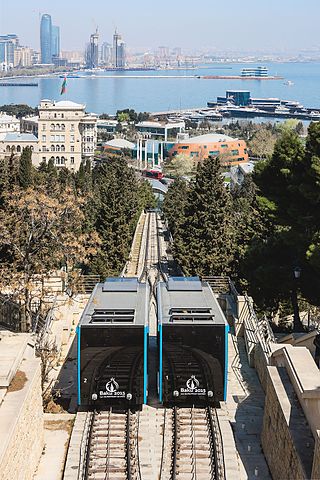
A funicular is a type of cable railway system that connects points along a railway track laid on a steep slope. The system is characterized by two counterbalanced carriages permanently attached to opposite ends of a haulage cable, which is looped over a pulley at the upper end of the track. The result of such a configuration is that the two carriages move synchronously: as one ascends, the other descends at an equal speed. This feature distinguishes funiculars from inclined elevators, which have a single car that is hauled uphill.

The Volkswagen Schwimmwagen is a light four-wheel drive amphibious car, used extensively by German ground forces during the Second World War. With over 15,000 units built, the Schwimmwagen is the most-produced amphibious car in history.
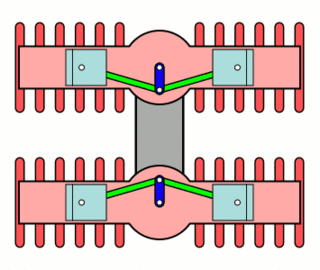
An H engine is a piston engine comprising two separate flat engines, most often geared to a common output shaft. The name "H engine" is due to the engine blocks resembling a letter "H" when viewed from the front. The most successful "H" engine in this form was the Napier Dagger and its derivatives. The name was also applied to engines of the same basic layout, but rotated through 90 degrees—most famously the Napier Sabre series. A variation on the "H" theme were the Fairey Prince (H-16) & Fairey P.24 Monarch, where the two engines retained separate drives, driving Contra-rotating propellers through separate concentric shafts. Although successful, they only existed in prototype form.
Yamaha Motor Co., Ltd. is a Japanese mobility manufacturer that produces motorcycles, motorboats, outboard motors, and other motorized products. The company was established in the year 1955 upon separation from Nippon Gakki Co., Ltd. and is headquartered in Iwata, Shizuoka, Japan. The company conducts development, production and marketing operations through 109 consolidated subsidiaries as of 2012.
The Tyrrell Racing Organisation was an auto racing team and Formula One constructor founded by Ken Tyrrell (1924–2001) which started racing in 1958 and started building its own cars in 1970. The team experienced its greatest success in the early 1970s, when it won three Drivers' Championships and one Constructors' Championship with Jackie Stewart. The team never reached such heights again, although it continued to win races through the 1970s and into the early 1980s, taking the final win for the Ford Cosworth DFV engine at the 1983 Detroit Grand Prix. The team was bought by British American Tobacco in 1997 and completed its final season as Tyrrell in the 1998 Formula One season. Tyrrell's legacy continues in Formula One as the Mercedes-AMG F1 team, who is Tyrrell's descendant through various sales and rebrandings via BAR, Honda, and Brawn GP.

A tender or coal-car is a special rail vehicle hauled by a steam locomotive containing its fuel and water. Steam locomotives consume large quantities of water compared to the quantity of fuel, so their tenders are necessary to keep them running over long distances. A locomotive that pulls a tender is called a tender locomotive. Locomotives that do not have tenders and carry all their fuel and water on board the locomotive itself are called tank locomotives or tank engines.

The Fiat 500, commonly known as "Topolino", is an Italian city car produced and manufactured by Fiat from 1936 to 1955.

The Porsche 996 is the fifth generation of the 911 model sports car manufactured by the German automaker Porsche from 1997 until 2006. It was replaced by the 997 in 2004, but the high performance Turbo S, GT2 and GT3 variants remained in production until 2006. The 996 had little in common with its predecessor, with the first all new chassis platform since the original 911 and a new water-cooled engine. Technically, it was a major change, a complete break from the original car other than the overall layout.

Front-wheel drive (FWD) is a form of engine and transmission layout used in motor vehicles, in which the engine drives the front wheels only. Most modern front-wheel-drive vehicles feature a transverse engine, rather than the conventional longitudinal engine arrangement generally found in rear-wheel-drive and four-wheel-drive vehicles.

In automotive design, a front-engine, front-wheel-drive (FWD) layout, or FF layout, places both the internal combustion engine and driven roadwheels at the front of the vehicle.
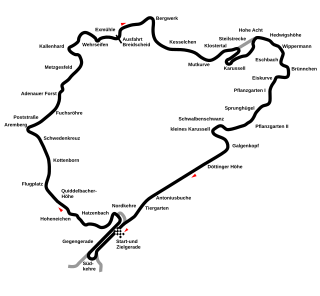
The 1962 German Grand Prix was a Formula One motor race held at the Nürburgring on 5 August 1962. It was race 6 of 9 in both the 1962 World Championship of Drivers and the 1962 International Cup for Formula One Manufacturers. The 15-lap race was won by BRM driver Graham Hill after he started from second position. John Surtees finished second for the Lola team and Porsche driver Dan Gurney came in third. The race was notable for having six different constructors taking the first six positions.
Republic of Austria v. Altmann, 541 U.S. 677 (2004), was a case in which the Supreme Court of the United States held that the Foreign Sovereign Immunities Act, or FSIA, applies retroactively to acts prior to its enactment in 1976.
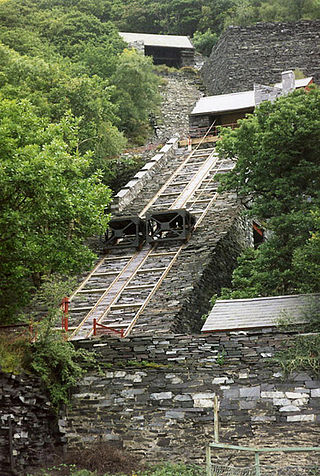
A cable railway is a railway that uses a cable, rope or chain to haul trains. It is a specific type of cable transportation.

The Brabham BT49 is a Formula One racing car designed by South African Gordon Murray for the British Brabham team. The BT49 competed in the 1979 to 1982 Formula One World Championships and was used by Brazilian driver Nelson Piquet to win his first World Championship in 1981.

Formula Super Vee was an open-wheel racing series that took place in Europe and the United States from 1970 to 1990. The formula was created as an extension of Formula Vee, a racing class that was introduced in 1959. Formula Super Vee in Europe was similar to F3 or Formula Renault today, a stepping stone to F1. In the United States, Formula Super Vee, often referred to as Super Vee, was a natural progression to Indy Car and Can-Am. On both sides of the Atlantic the series also was a platform for the promotion of VW products, similar to how Formula Renault promotes Renault products today.

The Honda RA271 was Honda's first Formula One racing car to enter a race. The chief engineer on the project was Yoshio Nakamura, with Tadashi Kume in charge of engine development. It was driven in three races during 1964 by American driver Ronnie Bucknum.
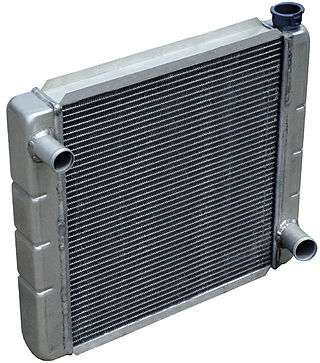
Radiators are heat exchangers used for cooling internal combustion engines, mainly in automobiles but also in piston-engined aircraft, railway locomotives, motorcycles, stationary generating plants or any similar use of such an engine.
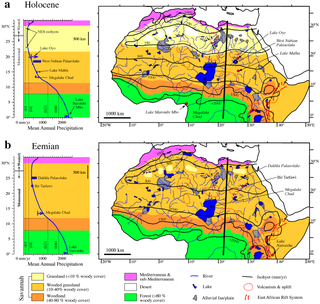
Lake Ptolemy is a former lake in Sudan. This lake formed during the Holocene in the Darfur region, during a time when the monsoon over Africa was stronger. The existence of the lake is dated between about 9,100–2,400 years before present. This lake could have reached a surface area of 30,750 square kilometres (11,870 sq mi), larger than present-day Lake Erie, although estimates of its size vary and it might have been much smaller. The shorelines in some places, insofar as they are recognizable, feature riparian landscapes and reeds. The lake was a freshwater lake replenished by groundwater and runoff from neighbouring mountains and might itself have been the source for the Nubian Sandstone Aquifer System. The lake featured a diverse ecosystem with a number of species, and possibly facilitated the spread of species between the Nile and Lake Chad.
References
- Hans-Otto Neubauer, "Altmann", in G.N. Georgano, ed., The Complete Encyclopedia of Motorcars 1885-1968 (New York: E.P. Dutton and Co., 1974), pp. 38.